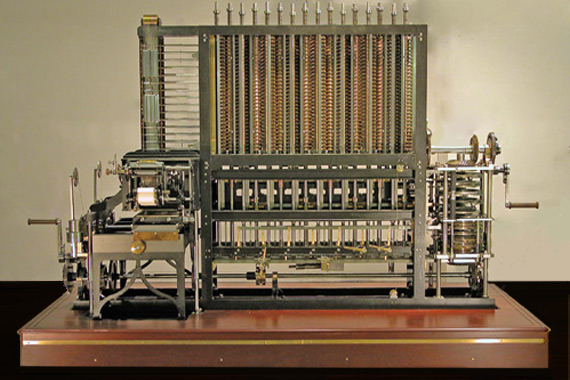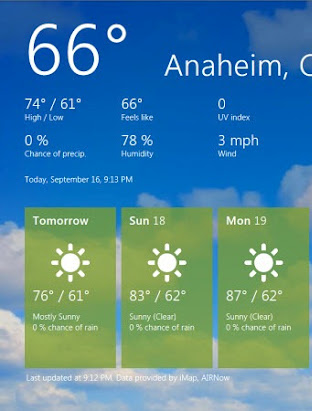So what should you be expecting from your business software in 2012? Or to quote Jive Software: “Why can’t business be social?”

Unless you’re a P.E. Teacher, or some kind of underwater, electro-magnetic-pulse tester person, it’s practically inescapable that you’re going to have to use software in your daily slog. “Users” have gotten used to having to work at their computers in order to make things happen. Actually work. How sad and pathetic is that?
It’s the 21st century. For over half a decade we’ve been sending humans into space, we turn ancient fossilised trees into personal motorised transport on a huge scale, 3 million people RIGHT NOW are blasting through the stratosphere at 500mph in pressurised tubes and we accept these feats of human ingenuity as being normal. Boring, even. With that in mind, when you look at the software we use each day, it is massively depressing just how much effort is required to get things done. Where is the love automation?
Computers have been around since the mid 1800s (and records of proposals of such machines date back to 1786) but the computer we know today has roots in the early 1970s in Xerox’s Palo Alto Research Center (PARC). Windows, icons, mice and pointers (WIMP) interfaces have had 40 years to develop and grow into something better and with the introduction of high-quality touch interfaces that time has come.
So the way we interact with our machines is changing, and new design paradigms such as Metro by Microsoft are showing us that there are other ways of working than starting at your, um, “Start” button. But while the look and feel of applications are changing the way they work aren’t: they’re still very much hanging onto the 1980s.

Making Connections – Ask “Why?”
Applications, even desktop apps, don’t live in isolation. Computers are ecosystems of applications and services for data to be drawn from and pushed to.
Look at the Metro Weather app in Windows 8 to the right. Great isn’t it? Shows you weather information for the weekend. Tells you the % chance of rain. Marvellous. However, it doesn’t show you the information you really want to know. Nobody wants to know the weather simple to have that knowledge in their brain, it is important for app makers to ask “Why?”.
People want to relate the weather to something they plan to do. And weather changes throughout the day – this just shows you an average. If this weather app called up data from your calendar it would know that you don’t have anything planned on Saturday until 9pm when you’re out on the town with your friends until the wee hours of Sunday – if there is to be a torrential rain storm between 9pm-2am and then this averaged weather has absolutely no value. OK, there is clearly “0% chance of rain”, but if there’s a 30% chance, it would be useful to know when that chance it at its peak and how that could affect your plans. (“Oh no, we will have to stay here for another drink, my phone tells me it’s raining outside”).
The same goes for your calendar app – when you book that important 9am meeting, your app should be showing traffic trends over the route you have to take and calculating the exact time that you should leave to achieve the best efficiency over the route. Your calendar app should be asking “Why?” as soon as you add that appointment. and then doing its damnedest to answer that question for itself!
This, dear software vendors, is the expectation of your next customer.

Activity Stream
The most fundamental feature of all modern software is the Activity Stream. You might call it a News Feed or something similar.
Activity Streams allow you to have a constant view of the things that you’re interested in. For example, with Facebook, your News Feed shows you people you’re Friends with and what they’re up to. If you’re a bank branch manager, your Activity Stream should be showing you the deposits and withdrawals in real-time. If you’re a 999 (911 for your Americans) emergency response call taker, you should be able to see in real-time where those five police cars and two ambulances you’ve just dispatched to the road-traffic accident are, so you can relay that to the person who called you to report it. If you’re building aeroplanes (airplanes, ‘merkans) you should be getting notified when the wings are finished, where they are on the train to Final Assembly, when the fuselage sections arrive, and how the final gluing together is going.
(I assume aircraft manufacture is mostly glue and magic.)
Metaprocess
Activity Streams become most useful when they are directly tied in with Workflow. Lets say you buy in widgets and then sell those widgets on at a profit. A workflow of a Salesperson at Widgets, Inc. could be:
New customer account » Create sales order » Credit Check customer » Allocate stock » Pick stock » Despatch stock to customer
Once the salesperson has raised a Sales Order, traditional software would force the sales person to manually refresh a list of “Despatched stock items” every so often to see if it had been successfully allocated, picked and despatched. But in 2012 that isn’t good enough. In 2012 we should be utilising the enormous amount of processing power at users’ fingertips and bringing the information to them!
If a user of the traditional software goes for lunch, they won’t find out about that order until they get back to their desk and hit Refresh, but today, the very second that order is despatched, the user of modern software can be notified via SMS, email, Twitter, some native mobile application or the Bat Signal…

It is more important to think about the exceptional events. The user of modern software goes to lunch, but as soon as her PC monitor is off, her phone buzzes, it’s the ModernSoft app letting her know that only 9 of the 10 ordered widgets are actually in stock – it’s Bob in the Warehouse. The notification also shows information about the customer, so the user clicks on their number, gives them a call and asks if there is an alternative they would be happy with. They say they can happily accept the next model down instead. The user contacts Bob and lets him know, and the order is despatched immediately with the 10th widget being replaced with the next best model. Less than five minutes and everything is resolved.
Meanwhile (maybe in Gotham City), it is an hour before the user of traditional, Activity Stream-less, software gets back to their desk after lunch and eventually remembers to hit Refresh…. and then speak to Credit Control to see if it was held up there. And then speak to Stock Control. And then Bob in the warehouse who fulfils picking lists…. You can see how Activity information speeds things up dramatically. Multiply this by the number of Sales Orders that salesperson creates in a day, and you’re saving money and time and effort and electricity and those enormously expensive Bat signal lamp bulbs…
The important thing about this tale is that you’ve just seen metaprocess hard at work. Metaprocess, or the processes around a process, such as notifications and conference calling, is the stuff that needs to be done to enable the key business processes to proceed. Asking colleagues for advice, verifying information, responding to requests for comment, sharing a particular sales strategy that worked on a particular customer, it is all essential to keeping a business flowing.
In 2012 “business software” isn’t just about watching the pennies and counting your stock. If you’re not monitoring the communications and interactions going on inside the company then you’re depriving yourself of huge amounts of useful information about what is actually going on. By adding systems that permit and encourage social interactions at work to improve processes and workflows, you can also report on it and generate ACTIONABLE metrics (as opposed to vanity metrics – a nod to Eric Ries for that guidance) with which to improve.
Example: Podio
Podio is a great example of software that is social, but fits business operations like a glove. More to the point, gone are the days of boring software, it is now possible to buy powerful, valuable systems which are also great fun to use. Podio also has the “Store” which lets you very easily install add-ons to extend its functionality and reach.
So, if you’re a business owner, ask yourself, is my software working for me or making me work for it? Is it fun to use? Does it break down silos and improve cooperation and interoperation? Does my software simply duplicate paperwork in a database or is it actively streamlining every facet of the business and positively affecting the bottom line?
Here are some great companies offering Modern Software for your business:



